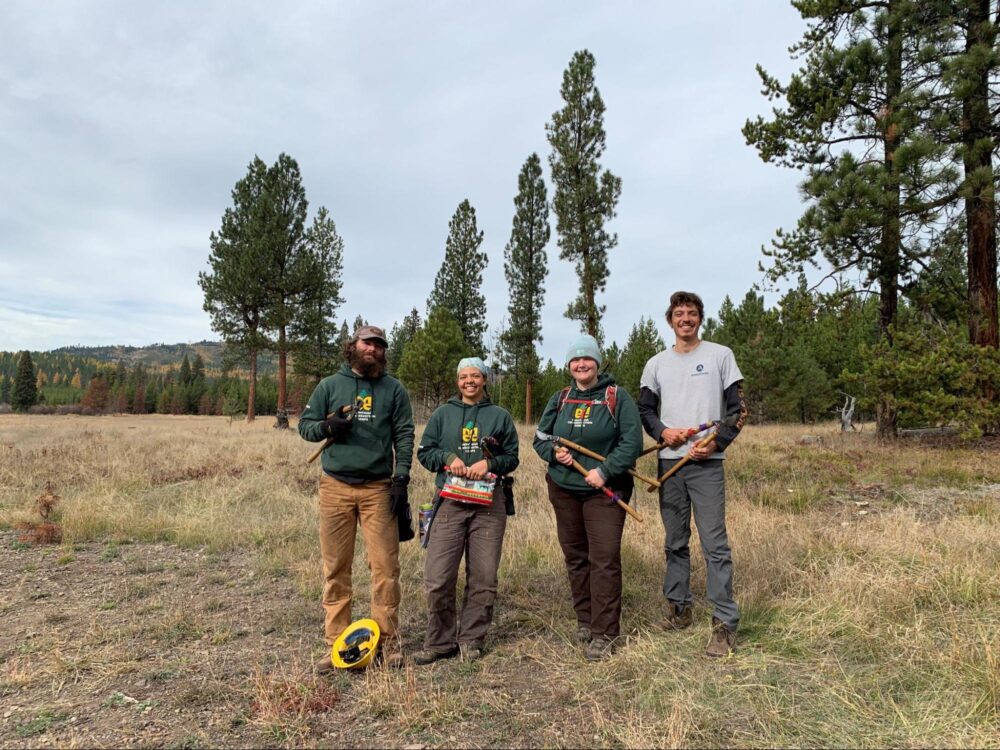We have much more to do and your continued support is needed now more than ever.
Community Wildlife Habitat Program Surges Past 50
As we near the end of Garden for Wildlife month, I want to shine a spotlight on the neighborhoods, towns, cities and counties around the country that are providing habitat for wildlife as part of National Wildlife Federation’s Community Wildlife Habitat program. To date, the program has certified 54 communities, with another 42 registered and working toward certification.
Here is a summary of the most recent communities to receive certification:
Fairfax County, VA 
- Certified: February 2011
- Population: 1,056,000
- Located 12 miles west of Washington, D.C.
How they made it happen: This project was somewhat in that there were already three certified communities in the county— Reston, Great Falls and Greater Mason District. One of the co-leaders for the Greater Mason District, Habitat Steward Kevin Holland, decided to take the project to a higher level and get the whole county certified. Kevin made a presentation to the Fairfax County Park Authority, whose Board agreed to partner with the project. Kevin also formed ongoing partnerships with the Fairfax County Park Foundation, the Northern Virginia Conservation Trust, the Friends of Hidden Oaks Nature Center and Fairfax Master Naturalists. Presentations about the Community Wildlife Habitat project and the Certified Wildlife Habitat® program were made to various groups within the county. There are approximately 1633 homes, 63 schools and 55 common areas (business, parks, places of worship, farms, community gardens) in Fairfax County that are Certified Wildlife Habitat® sites.
Fun fact: There is an Early Detection and Rapid Response program in the county to counteract invasive species.
Takoma Park, MD
- Certified: March 2011
- Population: 17,891
- Located just northeast of Washington, D.C.
How they made it happen: The non-profit Friends of Sligo Creek undertook the certification project, disseminating information through their website and through an electronic newsletter. They also manned tables at Farmers Markets and at Takoma Park’s annual Arbor Day celebration. In all 150 homes, 4 parks, a church and 5 schools became Certified Wildlife Habitat® sites.
Fun fact: Twice a year Friends of Sligo Creek organizes heavy-duty cleanups of the creek, enlisting 300-500 volunteers each time. They also hold annual native plant and seed exchanges and organize invasive plant removals in public areas.
Read more about the certification ceremony >>
Sammamish, WA 
- Certified: March 2011
- Population: 40,600
- Located 10 miles east of Seattle
How they made it happen: The Sammamish team participated in many environmental projects, including invasive plant removals, native plant rescues (from areas about to be developed), presentations to community groups, seminars on gardening for wildlife, and native plant sales. Team leader Elaine McEnery made a personal appeal to the heads of various neighborhood associations telling them how many certified habitats were already in their neighborhood and urging them to help the community effort. In all, 163 homes, 4 farms, 9 schools, 8 parks and the 5 Water and Sewer District sites were certified.
Fun fact: All five Sammamish Water and Sewer District sites were planted with native plants and drought-resistant plants and became NWF Certified Wildlife Habitat® sites. The district offices even have two rain barrels installed to catch the abundant precipitation that Washington is known for.
Whitewater Springs, TX
- Certified: April, 2011
- Population: 122
- Located approximately 45 miles northwest of Austin
How they made it happen: The Community Wildlife Habitat team, led by Allen Palmer, has been very active in the past two years, since it registered its project with NWF. Every year, they hold a Wildlife Habitat Education Days event, to educate residents about the local wildlife and how to provide habitat for them. The team has worked with several nearby native plant nurseries to provide information to residents about where to obtain native plants and a local naturalist helped them identify native plants already in the wild areas of the development. In all, 22 homes and 3 common areas within the development became Certified Wildlife Habitat® sites.
Fun fact: The team holds an annual Fishing Rodeo, where local children can learn the fundamentals of fishing in the spring-fed lake.
Chula Vista, CA
- Certified: April, 2011
- Population: 223,000
- Located: Just south of San Diego
How they made it happen: Knowing that there was a wide disparity in the income level of city residents, the city decided to pre-purchase National Wildlife Federation habitat certifications and signs. City staff and volunteers then approached residents to work with them to help them certify their yards. In all, 303 homes, 10 schools, 1 nature center, 5 parks, 4 businesses, a botanical garden, a recreational center, the civic center, a condominium’s grounds and the municipal golf course all became National Wildlife Federation Certified Wildlife Habitat® sites.
Fun fact: Chula Vista is the second largest city that is a Certified Community Wildlife Habitat in the United States.
Hamburg, PA
- Certified: May 2011
- Population: 4,000
- Located 28 miles west of Allentown
How they made it happen: The Hamburg team has been active pursuing certification these past three years. They have an annual Earth Day celebration and native plant sale, and have partnered with two local nurseries. They have had articles in the local newspapers about their project and given a workshop on composting and rain barrels. And, they have had numerous information booths at such diverse events as the annual Hamburg Art Stroll and the library book sale. They partnered with Blue Mountain Wildlife, Hamburg High School, the Our Town Foundation, the Girl Scouts and the local Audubon chapter.
Fun fact: Hamburg is the first community wildlife habitat to receive certification in Pennsylvania!




















